In this problem we study the popular card game Blackjack als
Solution
import simplegui
import random
CARD_SIZE = (73, 98)
CARD_CENTER = (36.5, 49)
card_images = simplegui.load_image
CARD_BACK_SIZE = (71, 96)
CARD_BACK_CENTER = (35.5, 48)
card_back = simplegui.load_image
in_play = False
message = \"\"
outcome = \"\"
score = 0
popped = []
player = []
dealer = []
deck = []
SUITS = (\'C\', \'S\', \'H\', \'D\')
RANKS = (\'A\', \'2\', \'3\', \'4\', \'5\', \'6\', \'7\', \'8\', \'9\', \'T\', \'J\', \'Q\', \'K\')
VALUES = {\'A\':1, \'2\':2, \'3\':3, \'4\':4, \'5\':5, \'6\':6, \'7\':7, \'8\':8, \'9\':9, \'T\':10, \'J\':10, \'Q\':10, \'K\':10}
class Card:
def __init__(self, suit, rank):
if (suit in SUITS) and (rank in RANKS):
self.suit = suit
self.rank = rank
else:
self.suit = None
self.rank = None
def __str__(self):
return self.suit + self.rank
def get_suit(self):
return self.suit
def get_rank(self):
return self.rank
def draw(self, canvas, pos):
card_loc = (CARD_CENTER[0] + CARD_SIZE[0] * RANKS.index(self.rank),
CARD_CENTER[1] + CARD_SIZE[1] * SUITS.index(self.suit))
canvas.draw_image(card_images, card_loc, CARD_SIZE, [pos[0] + CARD_CENTER[0], pos[1] + CARD_CENTER[1]], CARD_SIZE)
class Hand:
def __init__(self):
self.player_hand = []
def __str__(self):
s = \'\'
for c in self.player_hand:
s = s + str(c) + \' \'
return s
def add_card(self, card):
self.player_hand.append(card)
return self.player_hand
def get_value(self):
value = 0
for card in self.player_hand:
rank = card.get_rank()
value = value + VALUES[rank]
for card in self.player_hand:
rank = card.get_rank()
if rank == \'A\' and value <= 11:
value += 10
return value
def draw(self, canvas, p):
pos = p
for card in self.player_hand:
card.draw(canvas, p)
pos[0] = pos[0] + 90
if in_play == True:
canvas.draw_image(card_back, CARD_BACK_CENTER, CARD_BACK_SIZE, [115.5,184], CARD_BACK_SIZE)
class Deck:
def __init__(self):
popped = []
self.cards = [Card(suit, rank) for suit in SUITS for rank in RANKS]
self.shuffle()
def __str__(self):
s = \'\'
for c in self.cards:
s = s + str(c) + \' \'
return s
def shuffle(self):
random.shuffle(self.cards)
def deal_card(self):
popped = self.cards.pop(0)
return popped
def deal():
global in_play, player, dealer, deck, message, score, outcome
if in_play == True:
message = \"Here is the new hand\"
score -= 1
deck = Deck()
player = Hand()
dealer = Hand()
player.add_card(deck.deal_card())
dealer.add_card(deck.deal_card())
player.add_card(deck.deal_card())
dealer.add_card(deck.deal_card())
if in_play == False:
deck = Deck()
player = Hand()
dealer = Hand()
player.add_card(deck.deal_card())
dealer.add_card(deck.deal_card())
player.add_card(deck.deal_card())
dealer.add_card(deck.deal_card())
message = \"New Hand. Hit or Stand?\"
in_play = True
outcome = \"\"
def hit():
global in_play, score, message
if in_play == True:
player.add_card(deck.deal_card())
message = \"Hit or Stand?\"
if player.get_value() > 21:
in_play = False
message = \"Player busted! You Lose! Play again?\"
score -= 1
outcome = \"Dealer: \" + str(dealer.get_value()) + \" Player: \" + str(player.get_value())
def stand():
global in_play, score, message, outcome
if in_play == False:
message = \"The hand is already over. Deal again.\"
else:
while dealer.get_value() < 17:
dealer.add_card(deck.deal_card())
if dealer.get_value() > 21:
message = \"Dealer busted. You win! Play again?\"
score += 1
in_play = False
elif dealer.get_value() > player.get_value():
message = \"Dealer wins! Play again?\"
score -= 1
in_play = False
elif dealer.get_value() == player.get_value():
message = \"Tie! Dealer wins! Play again?\"
score -= 1
in_play = False
elif dealer.get_value() < player.get_value():
message = \"You win! Play again?\"
score += 1
in_play = False
outcome = \"Dealer: \" + str(dealer.get_value()) + \" Player: \" + str(player.get_value())
def exit():
frame.stop()
def draw(canvas):
canvas.draw_text(\"Blackjack\", [270,50], 48, \"Yellow\")
canvas.draw_text(\"Score : \" + str(score), [80,520], 36, \"Black\")
canvas.draw_text(\"Dealer :\", [80,110], 30, \"Black\")
canvas.draw_text(\"Player :\", [80,300], 30, \"Black\")
canvas.draw_text(message, [200,480], 26, \"Black\")
canvas.draw_text(outcome, [80,560], 28, \"White\")
dealer.draw(canvas, [80,135])
player.draw(canvas, [80,325])
frame = simplegui.create_frame(\"Blackjack\", 700, 600)
frame.set_canvas_background(\"Green\")
frame.add_button(\"Deal\", deal, 200)
frame.add_button(\"Hit\", hit, 200)
frame.add_button(\"Stand\", stand, 200)
frame.add_button(\"Exit\", exit, 200)
frame.set_draw_handler(draw)
deal()
frame.start()
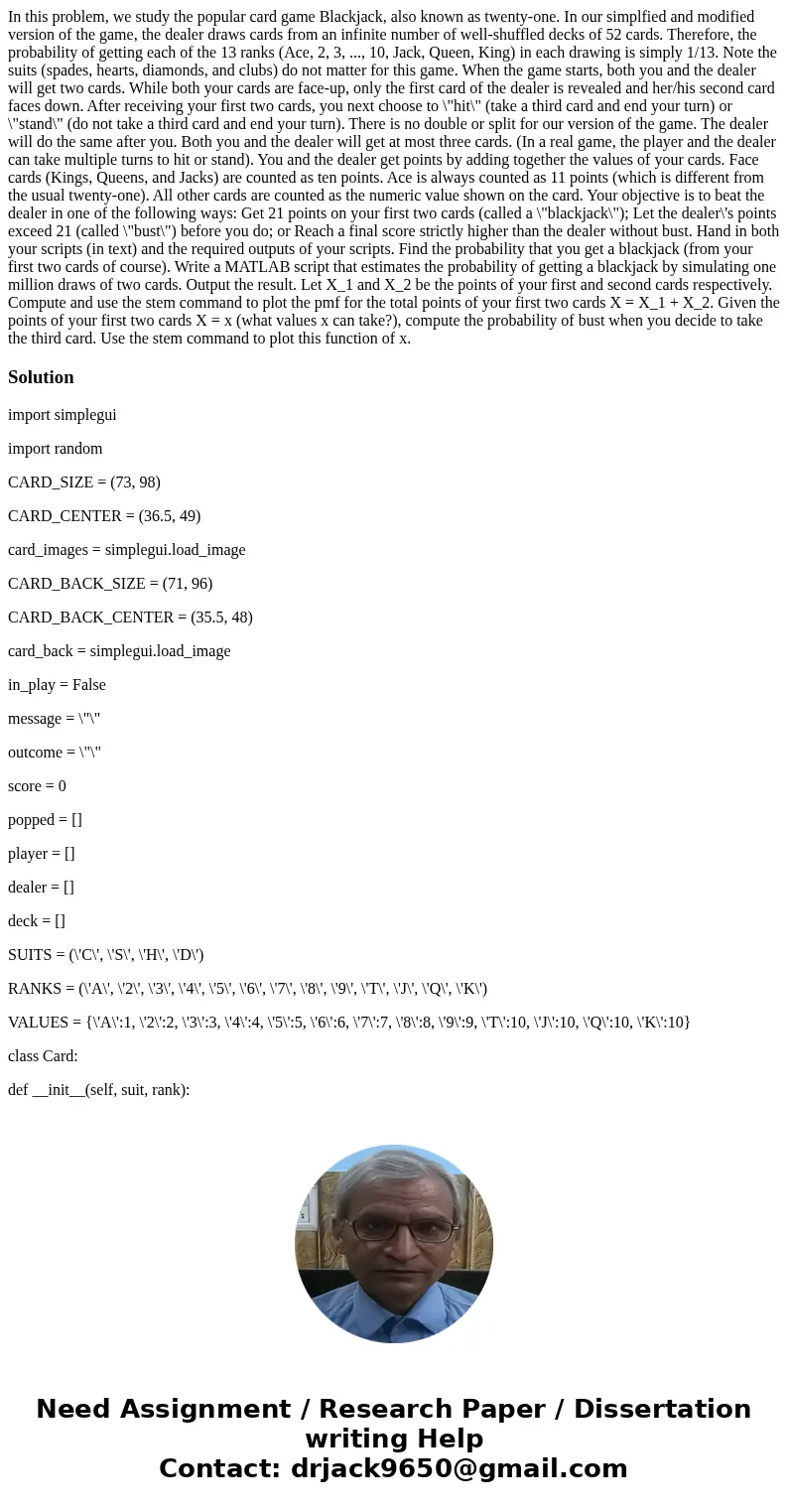
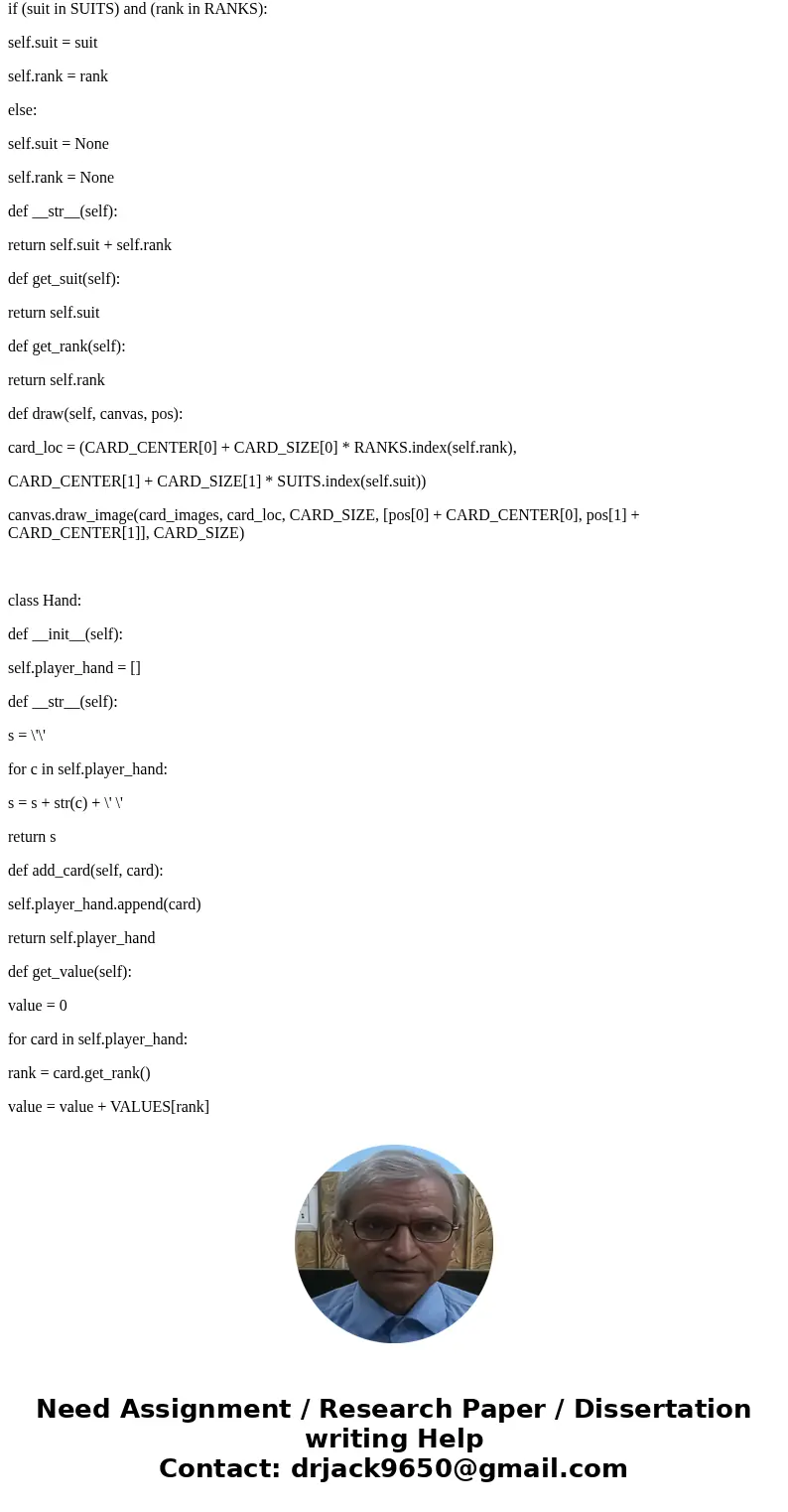
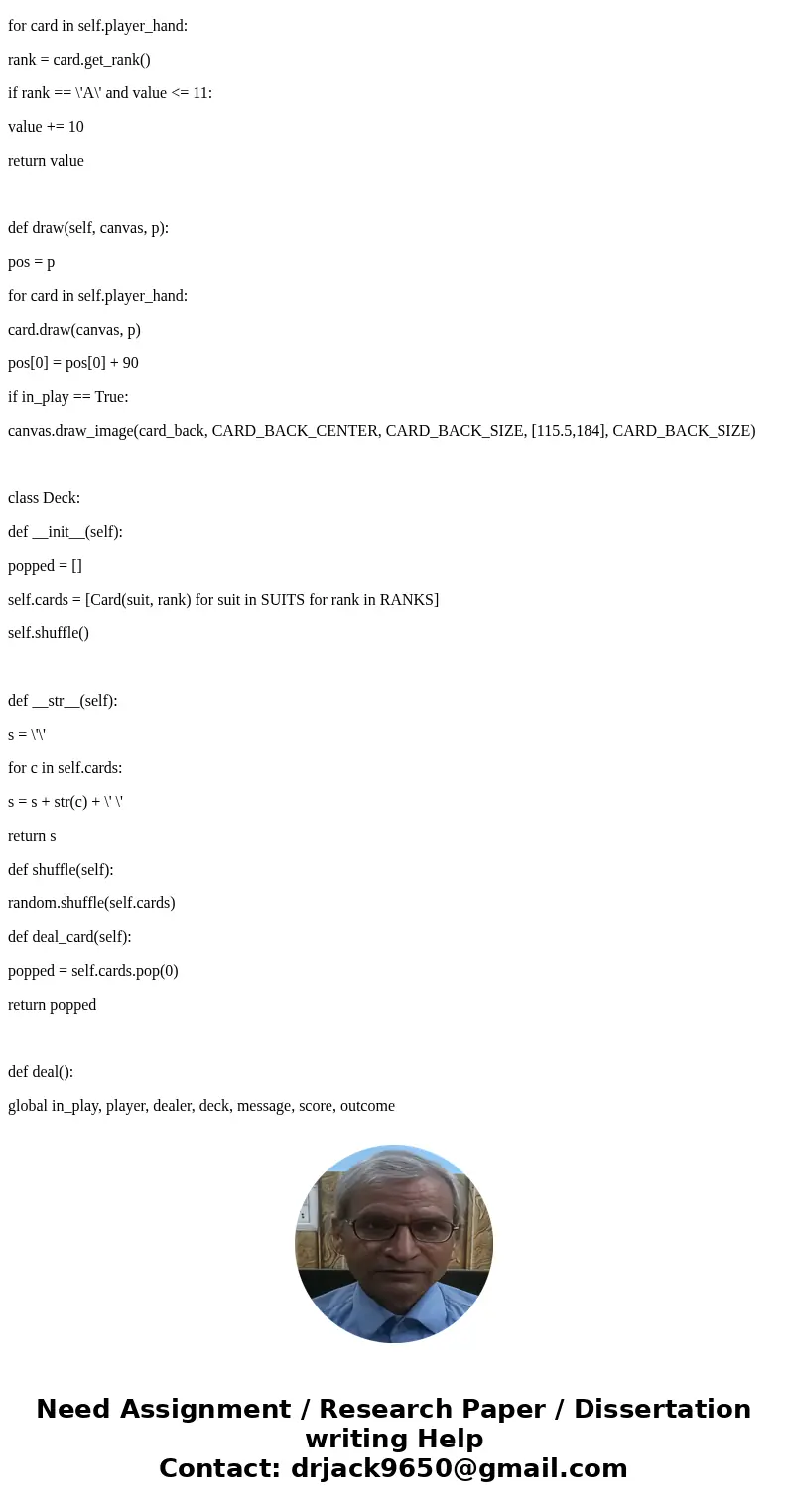
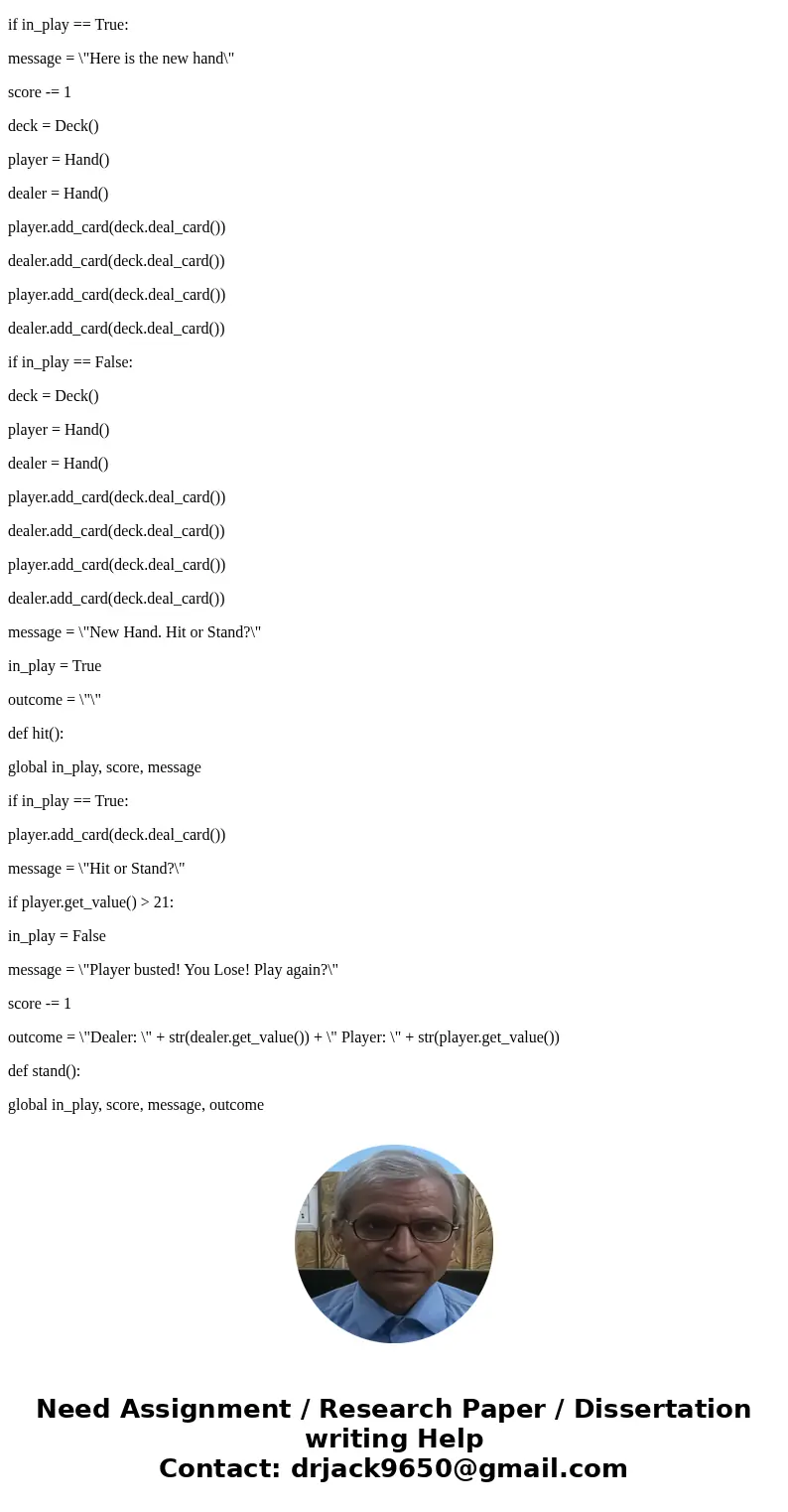
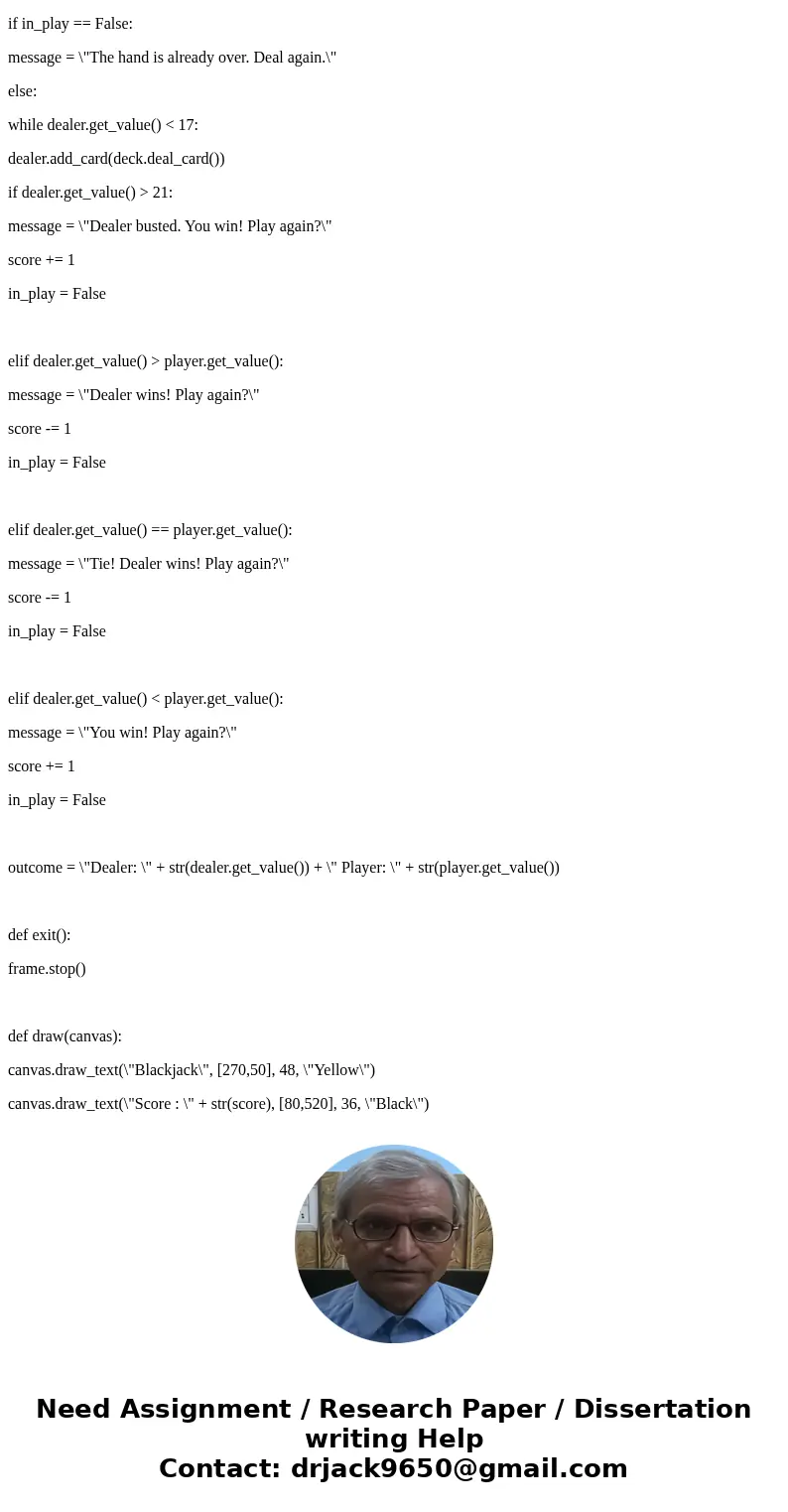
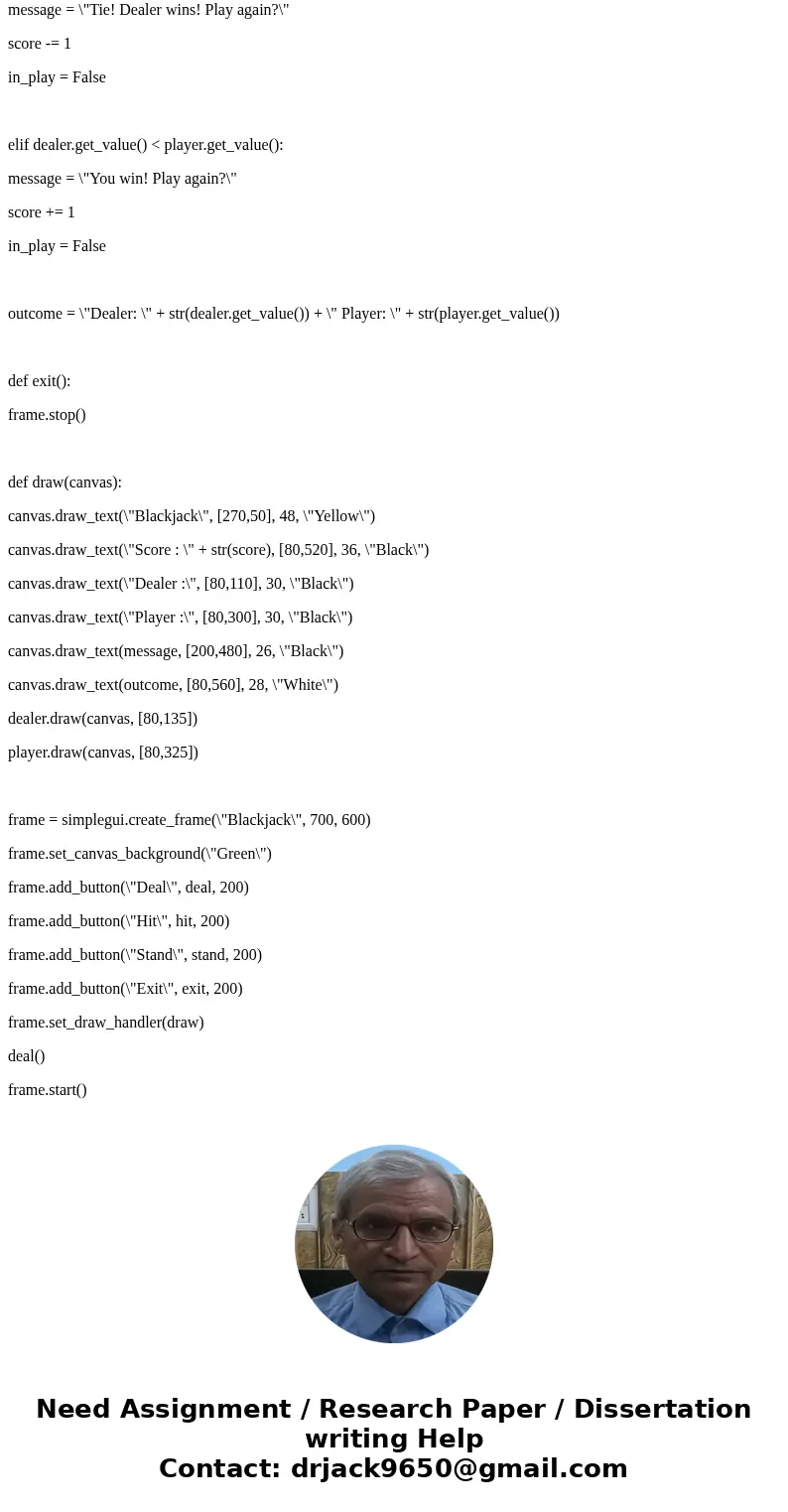
 Homework Sourse
Homework Sourse